Related Research Articles

An ecosystem consists of all the organisms and the physical environment with which they interact. These biotic and abiotic components are linked together through nutrient cycles and energy flows. Energy enters the system through photosynthesis and is incorporated into plant tissue. By feeding on plants and on one another, animals play an important role in the movement of matter and energy through the system. They also influence the quantity of plant and microbial biomass present. By breaking down dead organic matter, decomposers release carbon back to the atmosphere and facilitate nutrient cycling by converting nutrients stored in dead biomass back to a form that can be readily used by plants and microbes.

In classical soil science, humus is the dark organic matter in soil that is formed by the decomposition of plant and animal matter. It is a kind of soil organic matter. It is rich in nutrients and retains moisture in the soil. Humus is the Latin word for "earth" or "ground".
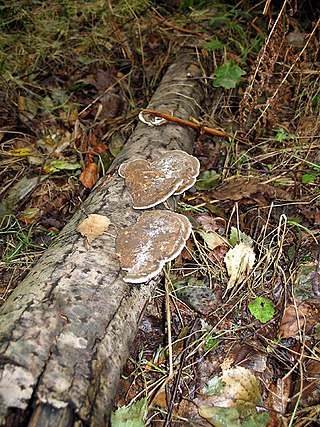
Decomposers are organisms that break down dead or decaying organisms; they carry out decomposition, a process possible by only certain kingdoms, such as fungi. Like herbivores and predators, decomposers are heterotrophic, meaning that they use organic substrates to get their energy, carbon and nutrients for growth and development. While the terms decomposer and detritivore are often interchangeably used, detritivores ingest and digest dead matter internally, while decomposers directly absorb nutrients through external chemical and biological processes. Thus, invertebrates such as earthworms, woodlice, and sea cucumbers are technically detritivores, not decomposers, since they must ingest nutrients - they are unable to absorb them externally.
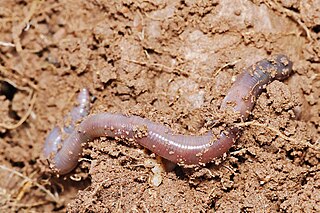
Detritivores are heterotrophs that obtain nutrients by consuming detritus. There are many kinds of invertebrates, vertebrates and plants that carry out coprophagy. By doing so, all these detritivores contribute to decomposition and the nutrient cycles. They should be distinguished from other decomposers, such as many species of bacteria, fungi and protists, which are unable to ingest discrete lumps of matter, but instead live by absorbing and metabolizing on a molecular scale. The terms detritivore and decomposer are often used interchangeably, but they describe different organisms. Detritivores are usually arthropods and help in the process of remineralization. Detritivores perform the first stage of remineralization, by fragmenting the dead plant matter, allowing decomposers to perform the second stage of remineralization.
Phil Ineson is a chair in Global Change Ecology at the University of York. Ineson is particularly noted for his work with stable isotopes.
Organic matter, organic material, or natural organic matter refers to the large source of carbon-based compounds found within natural and engineered, terrestrial, and aquatic environments. It is matter composed of organic compounds that have come from the feces and remains of organisms such as plants and animals. Organic molecules can also be made by chemical reactions that do not involve life. Basic structures are created from cellulose, tannin, cutin, and lignin, along with other various proteins, lipids, and carbohydrates. Organic matter is very important in the movement of nutrients in the environment and plays a role in water retention on the surface of the planet.

Soil biology is the study of microbial and faunal activity and ecology in soil. Soil life, soil biota, soil fauna, or edaphon is a collective term that encompasses all organisms that spend a significant portion of their life cycle within a soil profile, or at the soil-litter interface. These organisms include earthworms, nematodes, protozoa, fungi, bacteria, different arthropods, as well as some reptiles, and species of burrowing mammals like gophers, moles and prairie dogs. Soil biology plays a vital role in determining many soil characteristics. The decomposition of organic matter by soil organisms has an immense influence on soil fertility, plant growth, soil structure, and carbon storage. As a relatively new science, much remains unknown about soil biology and its effect on soil ecosystems.

Biochar is the lightweight black residue, made of carbon and ashes, remaining after the pyrolysis of biomass. Biochar is defined by the International Biochar Initiative as "the solid material obtained from the thermochemical conversion of biomass in an oxygen-limited environment". Biochar is a stable solid that is rich in pyrogenic carbon and can endure in soil for thousands of years.

Soil respiration refers to the production of carbon dioxide when soil organisms respire. This includes respiration of plant roots, the rhizosphere, microbes and fauna.
Soil organic matter (SOM) is the organic matter component of soil, consisting of plant and animal detritus at various stages of decomposition, cells and tissues of soil microbes, and substances that soil microbes synthesize. SOM provides numerous benefits to the physical and chemical properties of soil and its capacity to provide regulatory ecosystem services. SOM is especially critical for soil functions and quality.

Soil carbon is the solid carbon stored in global soils. This includes both soil organic matter and inorganic carbon as carbonate minerals. Soil carbon is a carbon sink in regard to the global carbon cycle, playing a role in biogeochemistry, climate change mitigation, and constructing global climate models.

The forest floor, also called detritus, duff and the O horizon, is one of the most distinctive features of a forest ecosystem. It mainly consists of shed vegetative parts, such as leaves, branches, bark, and stems, existing in various stages of decomposition above the soil surface. Although principally composed of non-living organic material, the forest floor also teems with a wide variety of fauna and flora. It is one of the richest components of the ecosystem from the standpoint of biodiversity because of the large number of decomposers and predators present, mostly belonging to invertebrates, fungi, algae, bacteria, and archaea. Certain (adapted) plants may be more apparent in tropical forests, where rates of metabolism and species diversity are much higher than in colder climates.
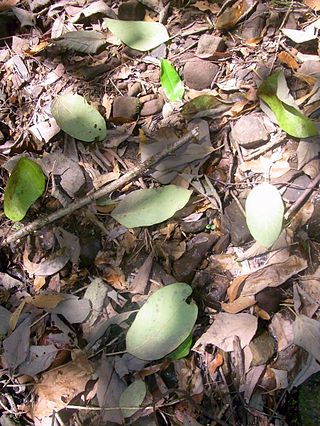
Plant litter is dead plant material that have fallen to the ground. This detritus or dead organic material and its constituent nutrients are added to the top layer of soil, commonly known as the litter layer or O horizon. Litter is an important factor in ecosystem dynamics, as it is indicative of ecological productivity and may be useful in predicting regional nutrient cycling and soil fertility.

Soil carbon storage is an important function of terrestrial ecosystems. Soil contains more carbon than plants and the atmosphere combined. Understanding what maintains the soil carbon pool is important to understand the current distribution of carbon on Earth, and how it will respond to environmental change. While much research has been done on how plants, free-living microbial decomposers, and soil minerals affect this pool of carbon, it is recently coming to light that mycorrhizal fungi—symbiotic fungi that associate with roots of almost all living plants—may play an important role in maintaining this pool as well. Measurements of plant carbon allocation to mycorrhizal fungi have been estimated to be 5 to 20% of total plant carbon uptake, and in some ecosystems the biomass of mycorrhizal fungi can be comparable to the biomass of fine roots. Recent research has shown that mycorrhizal fungi hold 50 to 70 percent of the total carbon stored in leaf litter and soil on forested islands in Sweden. Turnover of mycorrhizal biomass into the soil carbon pool is thought to be rapid and has been shown in some ecosystems to be the dominant pathway by which living carbon enters the soil carbon pool.

Diana Harrison Wall is the Founding Director of the School of Global Environmental Sustainability, a Distinguished Biology Professor, and Senior Research Scientist at the Natural Resource Ecology Laboratory at Colorado State University. She is an environmental scientist and a soil ecologist and her research has focussed on the Antarctic McMurdo Dry Valleys. Wall investigates ecosystem processes, soil biodiversity and ecosystem services and she is interested in how these are impacted by global change. The Wall Valley was named after her in recognition of her research in the McMurdo Dry Valleys. Wall is a globally recognised leader and speaker on life in Antarctica and climate change.
Wendy Yang is an associate professor of Plant Biology and Geology at the University of Illinois Urbana-Champaign where she works on soil biogeochemistry and ecosystem ecology.
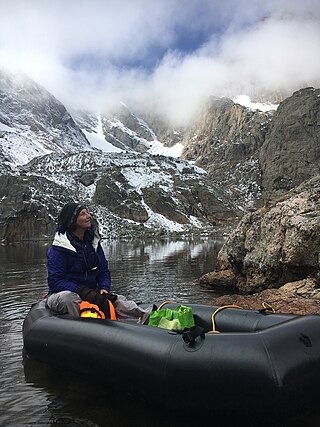
Jill S. Baron is an American ecosystem ecologist specializing in studying the effects of atmospheric nitrogen deposition in mountain ecosystems. She is a senior scientist at the United States Geological Survey and a senior research ecologist at the Natural Resource Ecology Laboratory at Colorado State University.
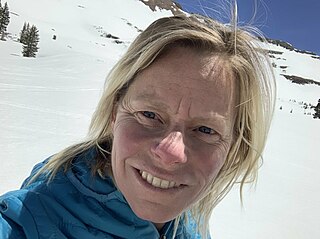
Heidi Steltzer is a German-born American scientist of arctic and alpine ecology and professor at Fort Lewis College in Durango, Colorado teaching Biology and Environment and Sustainability. Steltzer is known for her work on snow melt and how it effects ecosystems in the surrounding areas.
Ingrid C. "Indy" Burke is the Carl W. Knobloch, Jr. Dean at the Yale School of Forestry & Environmental Studies. She is the first female dean in the school's 116 year history. Her area of research is ecosystem ecology with a primary focus on carbon cycling and nitrogen cycling in semi-arid rangeland ecosystems. She teaches on subjects relating to ecosystem ecology, and biogeochemistry.
Joan Gardner Ehrenfeld was an American environmental scientist who was a professor at Rutgers University. Her research considered invasive species and ecology. She was elected Fellow of the American Association for the Advancement of Science in 2000.
References
- 1 2 3 4 Research, 50 Years of Excellence in Ecosystem Science Committed to; Education; Engagement. "Francesca Cotrufo – Homepage – Natural Resource Ecology Laboratory at Colorado State University" . Retrieved 2019-02-09.
- 1 2 3 "Dr. M. Francesca Cotrufo". biochar-international. Retrieved 2019-02-09.
- 1 2 Research, 50 Years of Excellence in Ecosystem Science Committed to; Education; Engagement. "Francesca Cotrufo – Biography – Natural Resource Ecology Laboratory at Colorado State University" . Retrieved 2019-02-09.
- ↑ Cotrufo, Maria Francesca; De Santo, Amalia Virzo; Alfani, Anna; Bartoli, Giovanni; De Cristofaro, Annunziata (1995-01-01). "Effects of urban heavy metal pollution on organic matter decomposition in Quercus ilex L. Woods". Environmental Pollution. 89 (1): 81–87. doi:10.1016/0269-7491(94)00041-B. ISSN 0269-7491.
- 1 2 3 4 5 6 7 8 9 10 11 12 Research, 50 Years of Excellence in Ecosystem Science Committed to; Education; Engagement. "Francesca Cotrufo – Curriculum Vitae – Natural Resource Ecology Laboratory at Colorado State University" . Retrieved 2019-02-09.
- ↑ "Francesca Cotrufo". banr.nrel.colostate.edu. Retrieved 2019-02-11.
- ↑ Cotrufo, M. Francesca; Ineson, Phil; Scott, AndY (1998). "Elevated CO2 reduces the nitrogen concentration of plant tissues". Global Change Biology. 4 (1): 43–54. Bibcode:1998GCBio...4...43C. doi:10.1046/j.1365-2486.1998.00101.x. ISSN 1365-2486. S2CID 85595358.
- ↑ "Global Change Biology". onlinelibrary.wiley.com. Retrieved 2019-02-09.
- ↑ "NREL-EcoCore Analytical Facility". ecocore.nrel.colostate.edu. Retrieved 2019-02-09.
- ↑ "Mentoring Award | American Society of Agronomy". www.agronomy.org. Retrieved 2019-02-09.
- ↑ "Aslo Forum". ASLO Bulletin. 4 (4): 5–14. 1995. doi: 10.1002/lob.1995445 . ISSN 1536-3538.